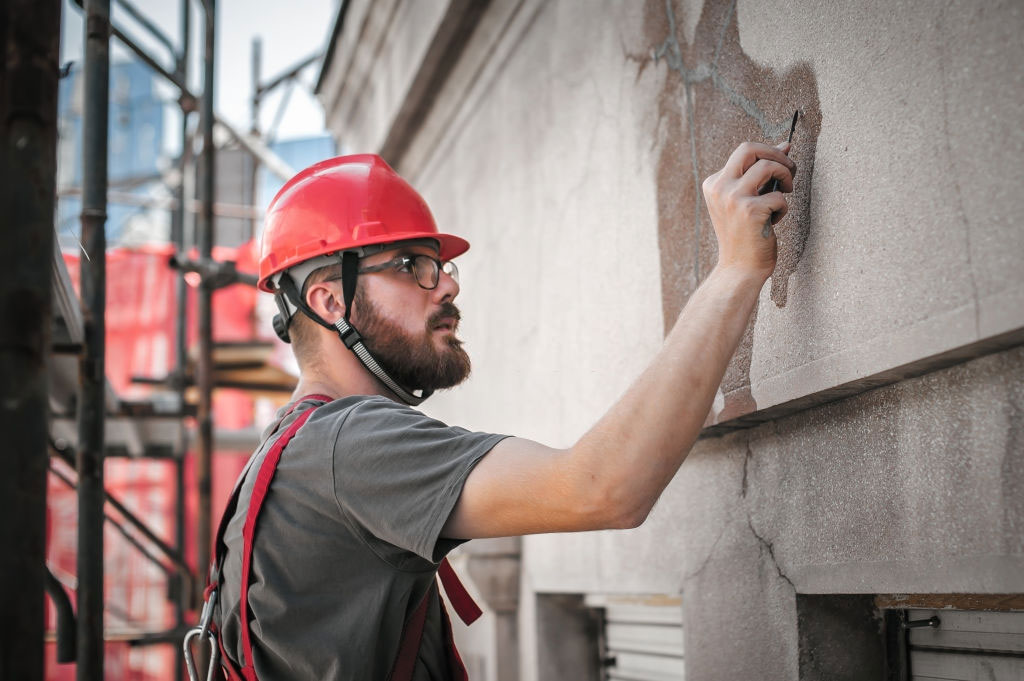Concrete is a widely used material in construction due to its durability and strength. However, over time, concrete can deteriorate and become damaged, leading to the need for repair and restoration. This article will explore various techniques for repairing and restoring concrete structures, providing valuable insights for contractors, homeowners, and anyone involved in the construction industry.

In the first paragraph, we will delve into the common types of concrete damage that can occur, such as cracks, spalling, and deterioration caused by environmental factors. We will also highlight the importance of identifying these issues early to prevent further damage and costly repairs. The second paragraph will introduce the different methods for crack repair, including epoxy injections and polyurethane sealants. Additionally, we will discuss patching and resurfacing techniques, such as using concrete overlays and mortars, to restore the appearance and structural integrity of damaged concrete surfaces. By providing an overview of the various repair and restoration techniques, this article aims to equip readers with the knowledge and understanding needed to effectively address concrete damage and ensure the longevity of their structures.
Identifying Concrete Damage
Identifying concrete damage is crucial for determining appropriate repair and restoration techniques. Common types of damage include cracking and spalling. By examining cracks, the cause and extent of the damage can be determined, allowing for effective repair methods to be selected. Spalling, chipping or breaking off of the concrete surface can be caused by freeze-thaw cycles, corrosion, or poor mix design. Identifying spalling areas enables the use of suitable repair techniques, like patching or resurfacing. Other damage types, such as scaling, staining, and corrosion of reinforcing steel, should also be identified. By accurately assessing the damage, the most suitable repair and restoration techniques can be applied for longevity and durability of the concrete.
Crack Repair Methods
You can use innovative methods such as crack injection and stitching to mend unsightly cracks in concrete surfaces. Crack injection involves injecting a specialized material like epoxy or polyurethane into the crack to fill and seal it, preventing further damage. This method works for narrow and wide cracks, creating a durable and long-lasting repair. On the other hand, crack stitching involves stitching metal bars or plates across the crack to reinforce and stabilize the concrete, particularly for larger cracks or structural issues. By promptly addressing cracks and using the appropriate repair method, you can restore the integrity and appearance of your concrete, ensuring its longevity and durability.
Patching and Resurfacing Techniques
To improve surface appearance, use patching to repair localized damage or holes in concrete. Fill the damaged area with a cement-based or epoxy patching material to restore structural integrity. Patching can be done on horizontal and vertical surfaces. Resurfacing restores the overall appearance by applying a thin layer of overlay material, like polymer-modified cement or concrete, with customizable colors, textures, and patterns. Resurfacing improves durability and is cost-effective compared to replacing concrete. Both techniques extend concrete lifespan and give it a fresh look. Choose suitable materials and apply proper techniques for long-lasting and visually appealing results. Consider patching or resurfacing to enhance the appearance and functionality of concrete surfaces.
Reinforcement and Structural Repair
Reinforcement and structural repair methods are essential for preserving the integrity and strength of deteriorating concrete surfaces. Epoxy injection and using carbon fiber or fiberglass wraps are commonly employed techniques for addressing cracks, spalling, and other signs of distress. These methods not only seal cracks and strengthen weakened areas but also enhance the overall structural integrity of concrete structures. Promptly addressing these issues prevents further deterioration or potential failure, restoring the concrete to its original strength.
Maintenance and Preventive Measures
Regular maintenance and preventive measures are crucial for preserving deteriorating surfaces. By implementing a maintenance program, potential issues can be identified early on and addressed before they become major problems. This includes routine inspections to identify damage, cleaning, and sealing to prevent further deterioration. Adequate drainage and protective coatings can also prolong the lifespan of concrete structures. Overall, these measures help maintain the strength and durability of concrete surfaces, saving time and money on repairs.
Read more https://concreteconstructionmarkham.com

